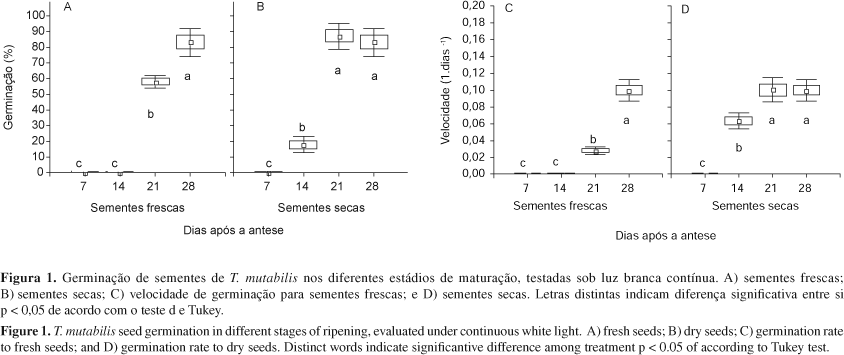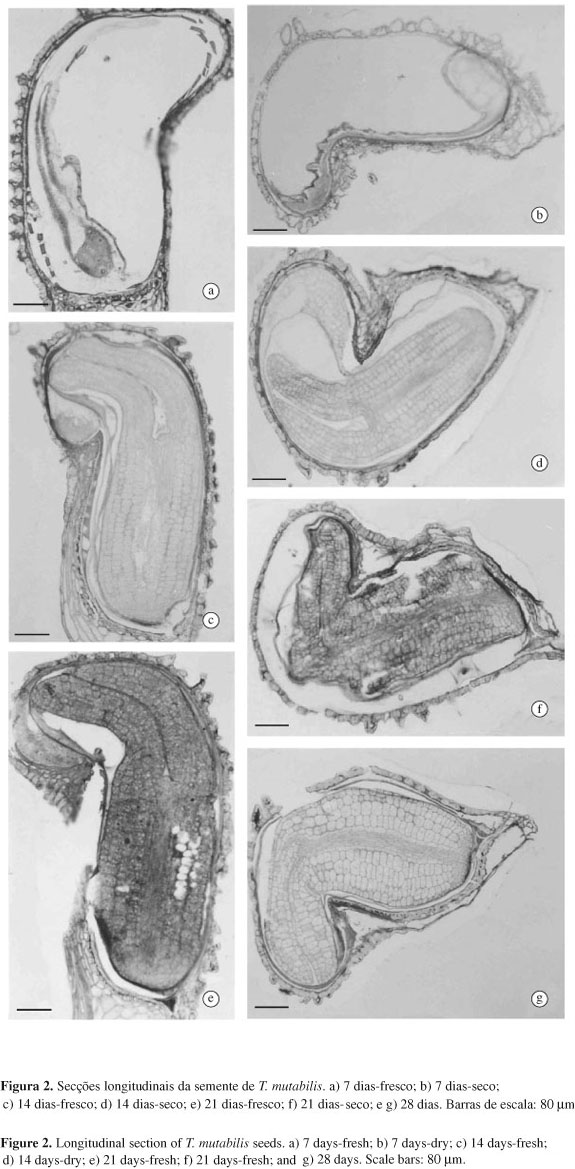An important step for understanding the dynamic of plant species in their environment is the study of their reproductive feature. Tibouchina mutabilis (Vell.) Cogn. (Melastomataceae) is a characteristic species of Serra do Mar, with potential for recovery of degraded areas and with landscaping purpose. The aim of this study was to investigate the acquisition of germination capacity of seeds and establishment of the best period for fruit harvest by weekly harvests, when morphological and germination capacity features were observed in four stages of development. The T. mutabilis seeds germinated only under white light. Besides the necessity of light for germination, seeds of T. mutabilis did not show another type of dormancy at the end of the ripening, with high germination percentage. The germination rate increases progressively in the function of lose of moisture in the subsequent stages of development, suggesting that the high moisture was the factor that restricted the germination. The best indicator of physiological maturation of seeds is the natural opening of the capsule. The advantage of this parameter is that it can be widely utilized and it is easy to recognize it. Due to the anemochoric dispersion of seeds, we propose that the harvest must be done, with good results, of fruit with 21 days after anthesis, and drying the fruit for capsule opening for seed extraction.
seed germination; seed maturation; morphology




